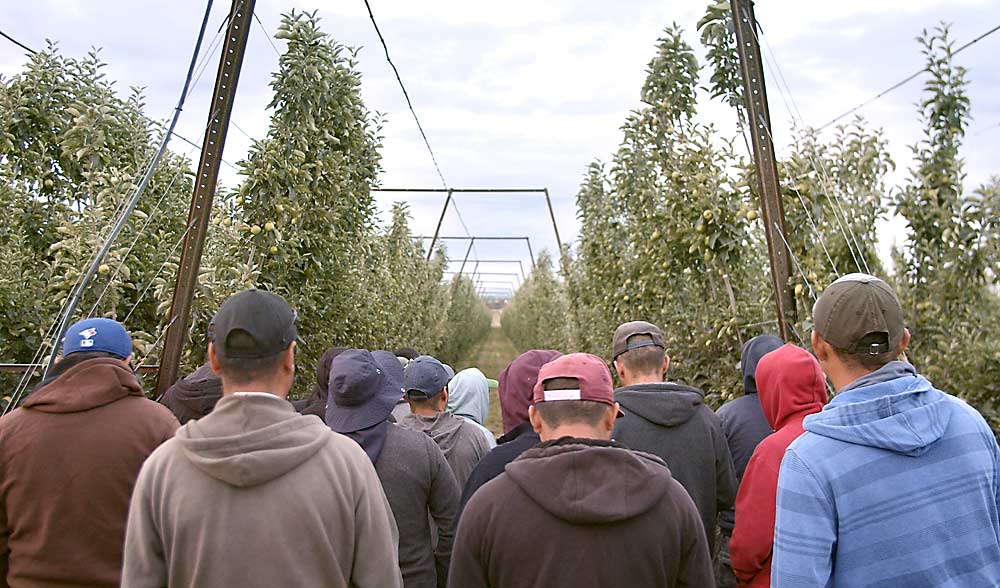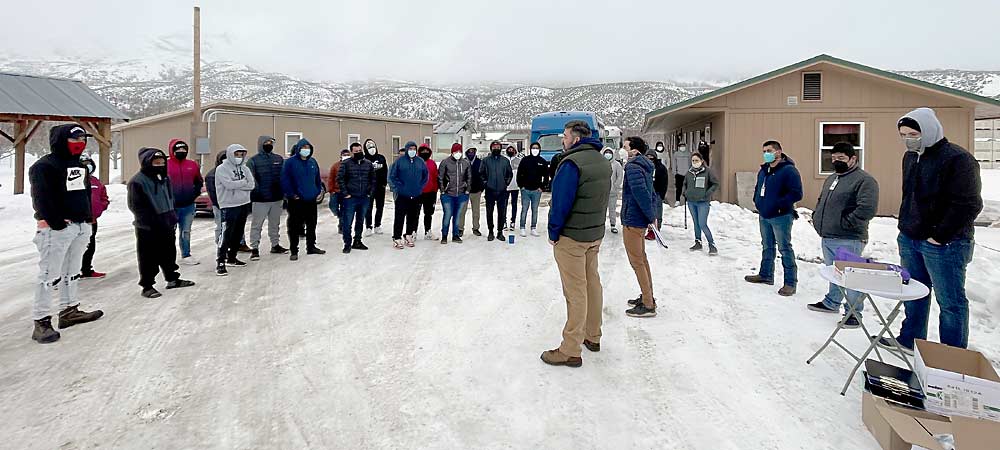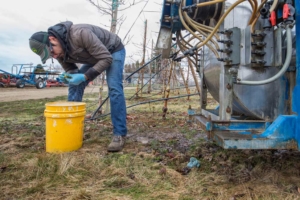
Farming in 40 hours: As states mandate overtime for agricultural workers, Good Fruit Grower continues to examine the impacts on the fruit industry.
Overtime mandates for agricultural workers make the H-2A guest worker program more attractive — and more expensive — for employers who continue to find the pool of domestic workers shrinking. Meanwhile, the U.S. Department of Labor has proposed changes that could drive up costs and complexity even more.
“It creates a lot of anxiety and frustration,” said Jon DeVaney, president of the Washington State Tree Fruit Association.
Frustrations aside, the use of the H-2A visa program continues to rise.
For the first time, H-2A employment topped 300,000 workers in 2021, when the federal government certified 318,000 H-2A positions, a 15 percent jump over 2020. This year looks to be no different, with a 22 percent increase in first-quarter applications. The program topped 200,000 just five years ago. In all, the use of H-2A workers has grown fivefold in the past 15 years.
California, the first state to mandate overtime for ag workers, is seeing some of the steepest increases.
With 32,000 visas, California last year overtook Washington for the third-highest spot on the H-2A employment list, behind Florida and Georgia. The Golden State accounted for nearly one of every 10 H-2A employees.
Overtime plays some role in that, said Bryan Little, director for employment policy for the California Farm Bureau. But shifting economics and population dynamics for the state’s 800,000 domestic agricultural workers is the biggest factor.
For years, California’s agricultural workers were willing to migrate to seasonal jobs around the state and also in Washington and Oregon. They don’t do that as much now, preferring to own homes and keep their kids in the same schools year to year, Little said.
“They tend to be more settled,” he said.
When it comes to H-2A, housing is the limiting factor, Little said. Growers have been converting old farmhouses and motels into H-2A quarters; one grower may retrofit an abandoned elementary school. Labor contractors have been building their own units, some of them quite large.

So far, H-2A use is concentrated in the leafy greens industry of the Salinas Valley, but more fruit producers are applying for workers, too, said Ian LeMay, president of the California Fresh Fruit Association, which represents tree fruit, table grape and blueberry growers.
“Each season, we hear about more,” he said.
This year, California rose to the country’s top spot as the state with the highest Adverse Effect Wage Rate — the federal H-2A minimum wage, known as AEWR — at $17.51 per hour.
Overtime is partly to blame, said Michael Marsh, president of the National Council of Agricultural Employers in Washington, D.C. Inflation and labor shortages also contribute.
The two previous AEWR leaders, Washington and Oregon, are at $17.41 for 2022. Those two states just joined California on a growing list of states that mandate farmworkers be paid time and a half for overtime. New York, at $15.66, also requires overtime. All the states are phasing in thresholds, but California went first; this year, overtime triggers at 40 hours for all but the smallest farms.
Michigan, a large fruit-producing state, does not have an overtime mandate but is among the top 10 H-2A users and has an AEWR of $15.37.
Proposed wage changes
The U.S. Department of Labor, meanwhile, has proposed a change to pay calculations that could drive AEWR even higher.
The proposal, first floated during the Trump administration, would parse out certain chores to pay at a higher rate than general labor. A worker hired to predominantly prune, for example, could briefly drive a truck to move one load of apples and would qualify for truck driver pay. Or, a crew of pickers pulled aside to repair a trellis would be considered construction workers.
The problem, Marsh said, is that the proposed rules would require those workers to keep their highest rate after they return to pruning or picking. What’s more, co-workers under H-2A contracts would have to be paid the same. That would mean the rest of the pruners and pickers would be paid at the same amount as their cohorts who were assigned the “temporary” stints as the truck driver and construction workers.
“It makes no sense,” Marsh said.
The National Council of Agricultural Employers and the Northwest Horticultural Council of Yakima, Washington, have opposed the proposal, detailing growers’ concerns. Marsh suspects the Department of Labor will issue a final decision by this fall.
Employer groups in general have argued that AEWR, designed to prevent H-2A from undercutting wages of domestic workers, actually drives up wages for all because farmers who don’t hire H-2A workers usually raise their rates to keep up with neighbors who do.
Each year, the U.S. Department of Agriculture surveys agricultural employers about wages, and the DOL uses that information to set AEWR. Those higher rates for different jobs would end up being included in AEWR, exacerbating the wage hikes each year.
The proposed change could have the biggest effect on Washington, the only entire state to routinely conduct prevailing wage surveys, Marsh said. Those annual surveys consider all earnings, including bonuses and overtime, and those temporary job changes would drive up prevailing wages even faster.
Under H-2A rules, employers must pay the highest of prevailing wages, AEWR, the state minimum wage or a contracted rate.
Prevailing wages and AEWR mathematically team up to push each other higher each year. In July 2019 — in the middle of the season — the U.S. Department of Labor increased prevailing wages for blueberry pickers from 50 cents per pound to 75 cents per pound. A Yakima-area producer sued, but a federal judge ruled in favor of the higher rates.
Employer groups, including the Washington Farm Bureau and wafla, a nonprofit labor facilitator based in Olympia, have long opposed the prevailing wage surveys.
“We should stop the surveys that came from a time when there was no minimum wage,” said Dan Fazio, the semiretired founder of wafla.
Meanwhile, hope is not lost for the Farm Workforce Modernization Act, a bill that passed the U.S. House of Representatives in 2019 but has stalled in the Senate, said Mark Powers, president of the Northwest Horticultural Council. It would have capped H-2A inflation at 3.25 percent per year. Many, but not all, agricultural employer groups supported the measure.
Senators from Idaho and Colorado have been working on similar legislation, Powers said. “While not perfect, (it’s) much better than the current 6 percent increase in AEWR now facing growers,” he said.
—by Ross Courtney








Leave A Comment